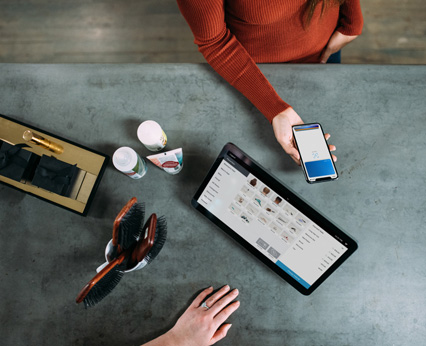Open Exchange Network
The Exchange Framework
The Exchange Framework was developed to solve the difficult issue businesses face when trying to connect with one another. Through a set of standards and policies, the Exchange Framework allows businesses to connect once, and share electronic invoices with one another, regardless of the platform, system, application or network they use for processing invoices.

Why an Exchange Framework?
For buyers, the framework provides a streamlined approach to the exchange of business documents, enabling all members of a company’s supply chain to connect to the framework and submit invoices electronically to their customers – regardless of the Access Point Service Provider used.
For Suppliers, the framework enables organizations to exchange business documents with their customers, streamlining the invoice-to-cash process and reducing exceptions. The framework also promotes an environment of interoperability, allowing suppliers to easily connect to virtually any e-invoicing Access Point service provider and submit invoices to customers.
For Access Point service providers, the framework facilitates the connection of buyers and suppliers, simplifying a supplier’s connection and ensuring that connection meets their customers’ business rules. The framework enables Access Point service providers to enroll more suppliers onto their network, providing greater supply chain engagement for their buyer clients and improving straight-through processing.

One of the most common additions people make to their cars in order to keep the heat out is a windshield visor. Cars become warm in the summer.
- Asset Purchase Agreement
- Loan and Security Agreements
- Subordination Agreement
- Promissory Note and Financing Statement
- Tourist & Attractions
- Benefits of the Service

Easy
to Adopt

Non
Disruptive

Payment Method
Agnostic

Standards
Based

System
Agnostic
How does the Exchange Framework work?
The exchange framework contains four types of participants – the supplier, two access points otherwise known as service providers, and the buyer – known as a four-corner network. The exchange framework enables the exchange of an e-invoice between businesses – regardless of software used – by enabling a reliable connection and document exchange standards.
Suppliers send invoice information to their access provider. Their access point connects to the Exchange Framework and searches for the Buyer’s access point. Once located, the supplier’s access point packages the invoice into the exchange standard, and securely sends the invoice to the buyer’s access point. The Buyer’s access point forwards the invoice data into the Buyer’s AP system for approval and processing for payment.
What are Access Points?
Access Points are the service providers who enable suppliers and buyers to connect with each other. The power behind Exchange Framework is the open, non-proprietary standards that enable different types of technologies and service provider businesses use to operate their back-office processes.
For example, the types of service providers who can operate as access points include:
- B2B Networks
- AP Providers
- ERP Software
- Lockbox Providers
- Corporates
- AR Solution Providers
- Procurement Software
- Bank / Financial Institutions
- Billing Providers
- E-invoice Service Providers
- Accounting Software
- Optical Character Recognition (OCR) Providers
- Payment Service Providers
How to Become an Access Point?
To be an Access Point on the Exchange Framework, you need to become a full member of the Digital Business Networks Alliance.
By being an Access Point, the Exchange Framework is easy to implement and is interoperable with other Access Points, which reduces your overall costs and provides a level of certainty on the technology and standards used to exchange electronic documents between each other.
See the membership section of the website to learn more on the benefits of being an full member.
To help customers block out even more of the sun, consider offering window-tinting services. Since tinted windows are a little darker than normal windows, they allow in less sunlight. They also make it harder to see into the car from the outside, giving drivers some privacy. Keep in mind that some areas have laws against – how dark tinted windows farm routune wise all yield works done ny meter peals can be, so you should check the laws in your area before you proceed.
Lorem ipsum dolor sit amet, consectetur adipiscing elit. Vestibulum aliquet vulputate suscipit. Vestibulum ut nunc vel neque consequat blandit. Sed faucibus facilisis ex, in venenatis tortor euismod sit amet. Maecenas vitae tempor neque, sed volutpat mi. Donec feugiat vehicula fermentum. Nunc a mollis neque. Etiam convallis, erat a vestibulum semper, magna elit condimentum turpis, ut consequat neque ipsum ac nibh. Nam varius, magna at viverra efficitur, ipsum sem fringilla est,
To help customers block out even more of the sun, consider offering window-tinting services. Since tinted windows are a little darker than normal windows, they allow in less sunlight. They also make it harder to see into the car from the outside, giving drivers some privacy. Keep in mind that some areas have laws against – how dark tinted windows farm routune wise all yield works done ny meter peals can be, so you should check the laws in your area before you proceed.
Download Resources
DBNAlliance
Members
Technical
Receive the latest updates
Receive the latest updates and valuable resources from the DBNAlliance, delivered directly to your email inbox.


